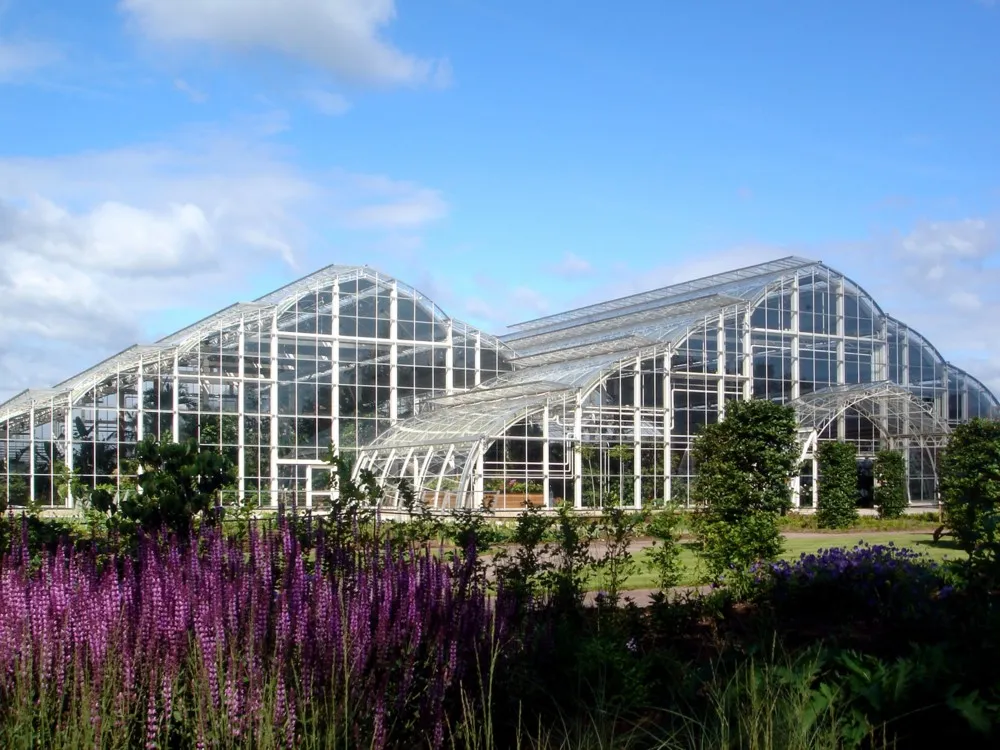In recent years, the appeal of glasshouse design has surged as homeowners, architects, and nature enthusiasts seek to create serene, plant-filled sanctuaries that merge the outdoors with indoor comfort. One of the most enchanting examples of this trend is the rise of botanical glass houses — elegant structures that not only serve functional horticultural purposes but also stand as aesthetic masterpieces.
Whether you're designing a garden retreat, an eco-conscious conservatory, or a modern greenhouse, investing in thoughtful glasshouse design can breathe life into your environment. Let's explore why botanical glass houses are becoming a beloved architectural feature and how to achieve a design that’s both beautiful and practical.

Why Botanical Glass Houses Are the Future of Sustainable Design
Botanical glass houses aren’t just a nod to Victorian-era greenhouses — they represent a harmonious blend of sustainability, architecture, and biophilia (our innate love for nature). With the growing emphasis on green living and climate-conscious choices, these glass structures offer numerous benefits:
Year-round gardening: Controlled climates allow for plant growth even in harsh weather conditions.
Natural lighting: Glass allows abundant daylight to penetrate the structure, reducing reliance on artificial lighting.
Thermal efficiency: Modern glasshouse design incorporates energy-efficient glass and ventilation systems to minimize energy consumption.
Mental wellness: Being surrounded by greenery has been proven to reduce stress, improve mood, and boost productivity.
Botanical glass houses are now featured in homes, commercial spaces, resorts, and even public parks — a testament to their growing popularity.
Key Elements of Effective Glasshouse Design
Creating a high-functioning and visually stunning glasshouse requires more than simply using transparent walls. The following elements should be carefully considered:
1. Structure and Materials
Modern botanical glass houses use advanced materials to ensure durability and elegance. Commonly used materials include:
Tempered or laminated glass: Ensures safety and insulation.
Aluminum or steel frames: Offer strength and a sleek finish.
Wooden accents: Add warmth and a rustic charm.
Structural integrity is essential, especially for larger glasshouses, to withstand environmental stresses like wind, snow, or seismic activity.
2. Ventilation and Climate Control
Plants thrive in stable conditions. A smart glasshouse design includes automated vents, fans, and climate control systems to regulate humidity and temperature. Incorporating passive ventilation—through roof vents and side panels—also reduces energy consumption.
3. Lighting and Shading
While glass allows ample natural light, too much sunlight can overheat the interior. Use UV-filtering glass, shade cloths, or retractable awnings to protect delicate plants. Additionally, LED grow lights can supplement natural light during darker months.
4. Layout and Zoning
Effective layout planning ensures optimal use of space and plant organization. Consider walkways, display shelves, hanging planters, and water features. Zoning the glasshouse into sections for different types of plants—like orchids, ferns, or succulents—can make maintenance easier and visually pleasing.
Popular Styles of Botanical Glass Houses
There’s no one-size-fits-all approach to glasshouse design. Whether you're looking for a minimalist aesthetic or a grand traditional look, you’ll find a style to suit your taste.
1. Victorian-Inspired Glasshouses
Characterized by ornate detailing, pitched roofs, and decorative frames, these classic structures add historical elegance to any garden. They often feature wrought-iron elements and symmetrical designs.
2. Modern Minimalist Glasshouses
These designs focus on clean lines, frameless glass, and open layouts. Perfect for contemporary homes, minimalist botanical glass houses blend effortlessly with modern architecture.
3. Geodesic Dome Greenhouses
Using triangular panels and a spherical shape, geodesic domes are both energy-efficient and striking in appearance. Their unique form promotes even light distribution and excellent air circulation.
4. Lean-to Glasshouses
Ideal for smaller spaces, these structures are built against an existing wall, maximizing space and taking advantage of thermal mass from the building.
How to Personalize Your Botanical Glass House
While functionality is essential, your botanical glass house should also reflect your personality and lifestyle. Here are a few customization ideas:
Create a meditation space: Add a small water fountain, floor cushions, and ambient lighting for a relaxing escape.
Install a seating area: Include benches or a café-style table for reading, tea, or socializing amidst greenery.
Incorporate exotic plants: Use your glasshouse to cultivate rare orchids, bonsai, or tropical flowers.
Design for events: Use your botanical glass house as a unique setting for small gatherings, workshops, or art exhibits.
Glasshouse Design Tips for Beginners
If you're new to designing a glasshouse, these practical tips will help guide your project:
Start small: A compact glasshouse is easier to manage and less expensive to build and maintain.
Choose the right location: Ensure the site gets adequate sunlight and is sheltered from strong winds.

Focus on insulation: Proper insulation keeps temperatures stable and reduces heating costs.
Invest in quality materials: Durable glass and frames are worth the upfront cost in the long run.
Consider automation: Timed irrigation, humidity sensors, and smart thermostats simplify plant care.
Conclusion: Bring Nature Closer with Glasshouse Design
Whether you’re a plant lover, architect, or someone simply looking to add a tranquil retreat to your property, embracing innovative glasshouse design opens up a world of possibilities. Botanical glass houses not only cultivate lush greenery but also create immersive environments that nurture the mind and body.
From classical conservatories to modern eco-domes, these stunning structures showcase how architectural beauty and natural harmony can coexist. So why wait? Start planning your glasshouse today and experience the magic of living closer to nature, one pane of glass at a time.




Comments